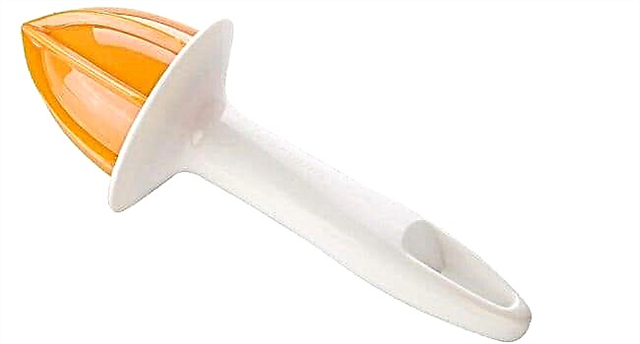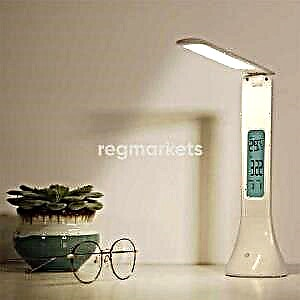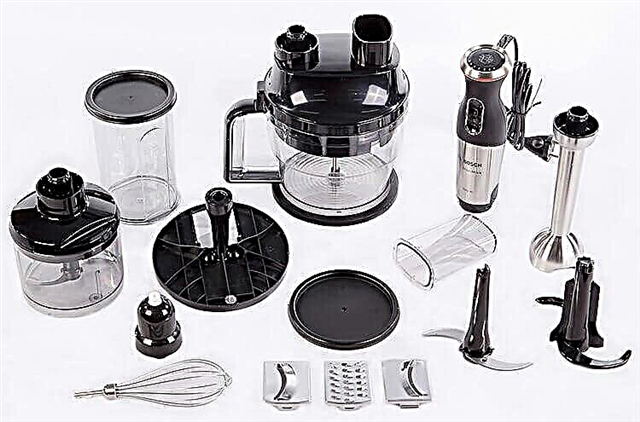Cladding the kitchen is one of the most economical ways of wall cladding in this room. It looks equally good in small-sized apartments, and in the spacious areas of private houses. Many people choose it, so manufacturers produce collections in various colors and from different materials, which allows you to choose it for any design.
Lining and what it is
Speaking of finishing the kitchen with lining, they mean the use of facing material in the form of narrow laths, which are interconnected in the form of a spike-groove.
Initially, only wood was the material for the manufacture of these strips, but manufacturers of building materials are increasingly using plastic, so now you can buy it from PVC. Thus, as a material for the manufacture of apply:
- Natural wood,
- Plastic (obtained from polyvinyl chloride by extrusion),
- MDF (fiberboard obtained from waste from the wood processing industry).
As a rule, the lining for finishing a modern kitchen is available in thicknesses from 7 to 14 mm and a width of about 10 - 12.5 cm. The length of the manufactured products reaches 3 meters (during installation it is cut into convenient segments).
What type of lining to choose
Each of the materials has its own advantages and disadvantages, therefore, a rational choice can only be made by analyzing the characteristics of each, adding to this their wishes.
Wall decoration with natural wood material - a guarantee of an interesting interior
Decorating the kitchen with wooden lining is perfect for interior decoration of private houses (especially from a log house). This material fits into such an interior, giving it even greater luxury, and is also characterized by environmental cleanliness, beauty, high reliability, durability, ease of processing and installation. Choosing such a material, one should take into account its cost (after all, it is more expensive than PVC), a small variety of paints, exposure to moisture and fire hazard.
For finishing the kitchen with clapboard in a private house, MDF can be an excellent solution. This material is also classified as natural, therefore, it is environmentally friendly. It is obtained from waste wood, its price is reduced. It is lightweight, durable, not afraid of moisture, easy to maintain, resistant to the formation of fungus. Such decoration does not differ in a sufficient number of colors, but today it is also available with different textures: under a natural tree, bamboo, natural stone.
For the decoration of the kitchen with a clapboard in the apartment, plastic is most often chosen (sometimes MDF). First of all, it contributes to its low cost (in comparison with other types) and the variety of colors. Therefore, for any color in the design, you can choose a harmonious shade. In addition, the material has:
- good moisture resistance (does not absorb, does not pass moisture),
- hygiene (is poor soil for various microorganisms),
- easy to maintain, easy to clean from dirt,
- quick installation
- resistance to aggressive environments.
How to apply wall paneling in the interior
Today, the most fashionable options for decorating the walls of the kitchen with clapboard can be found in photographs of already decorated interiors. This material is used for different surfaces, but its monotony will not be entirely interesting, therefore, combination is most often chosen. For example,
- rack ceiling and plastered walls,
- rack ceiling and the same apron, plus plastered walls (or pasted over with wallpaper),
- plastered ceiling - rack walls.
design of a country kitchen lined with lining
Panels can differ in the way of placement, due to which they visually expand the space or raise the ceiling. You can verify this by looking at the trim photos. Today you can choose horizontal, vertical, as well as diagonal direction. The latter option can be especially interesting to use when decorating the kitchen with a clapboard in a private house and in photographs you can notice unique and unusual compositions of lamellas of different lengths.
For apartments, an interesting option is to cut wooden lamellas into small fragments and imitate brickwork with their help.
Installation technique for this cladding
One of the advantages of combining all types of lining for the decoration of the kitchen is the ability to install on their own. This is due to the presence of a spike-groove type attachment, due to which all segments of the lining are firmly and reliably fastened together. Before proceeding directly to the process, you can look at the stages of work on the photos on the decoration of the walls of the kitchen with clapboard and make sure that they are not particularly difficult.
Panel mounting example
Installation can be done quickly enough, because it is this facing material that does not require preparatory work with the surface (it does not need to be brought out to perfect evenness and smoothness), because the panels are not attached to it, but to a specially equipped crate.
The lath for the decoration of kitchen walls with clapboard is made of wooden or metal battens prepared and cut in advance. First, the first rail is placed - at the lower level of the cladding, then the last - on top. Then, at a distance of 30-50 cm from each other, the remaining horizontal slats are attached to the wall surface, and after that the first corner profile is installed (most often, the left corner is chosen for the start). The first panel is inserted into the groove of this profile, and the second, third and so on are inserted into it (until the next corner profile, and from it - along the wall). Fastening to the frame is done with self-tapping screws, then ceiling and floor skirting boards are installed on top and bottom.
What materials are used to decorate the kitchen
A variety of materials are used to clad rooms and kitchen furniture. The most common of these are wood, plastic and ceramic products.
For cladding walls and ceilings, the following types of lining are used:
- Wooden
- Plastic
- Wood fiber (MDF lining).
For the installation of lining using the following methods:
- Vertical,
- Horizontal,
- Diagonal.
The vertical way is the most popular way of laying. With the vertical method, the best protection of the panel connection system from moisture is ensured.
With the horizontal method, the racks of the lattice have a vertical position. This method provides the best degree of ventilation of the wall cladding. The diagonal method is notable for its aesthetic characteristics. Used to create a unique interior. Lining in the kitchen, fixed in various ways, is presented in the photo in this article.

Lining
For the manufacture of wooden lining various types of wood are used. The walls and ceiling in the kitchen are sheathed with wooden panels made of coniferous and hardwood.
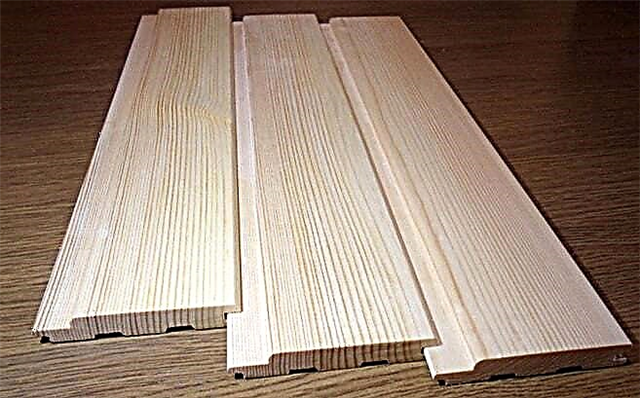
Softwood panels are made of pine, spruce, cedar, fir, larch. Lumber from these species is characterized by low thermal conductivity, light weight, beautiful texture. Panels made of such wood protect the room from sudden changes in temperature. High porosity of the material provides a dry indoor climate. Due to the presence of essential substances, the lining produces a pleasant aroma. The action of essential oils has a healing and relaxing effect. Hardwood paneling is made of oak, birch, ash, linden, aspen. Such wood is characterized by increased strength, high hardness, a unique pattern, a variety of color shades.
Tip. Lining should be used in kitchens with a large area. This is due to the design features of the walls of the panels. The presence of the crate significantly reduces the useful area of the room.
For the best effect, the wooden lining in the kitchen is covered with oil and varnish compositions. The transparent color of the coating favorably emphasizes the original texture of the tree. The antibacterial additives contained in the paintwork protect the lining from harmful insects and pathogenic bacteria.
The special composition of modern varnishes allows you to create a durable water and dirt-repellent film on the surface. Treated surfaces are easy to clean from dust and dirt. For interior decoration, the lining is painted in a different color. For painting panels, there is a wide variety of coloring compositions based on plant and artificial components.
Block house
The outside of the blockhouse has convex outlines. A curved shape imitates a wooden blockhouse. The blockhouse for interior decoration has a reduced size compared to the blockhouse for the facade. The use of a blockhouse in the kitchen does not affect the size of the usable area of the room. Products have increased strength, durability and originality.

Panels
The panels differ from the lining in the rectangular shape of the profile. For the production of panel products, various varieties of valuable wood species are used. Wooden products can withstand several days at room temperature and humidity before installation. This will help prevent possible deformation of the panels during their operation.
The surface of the panels is smooth, with a relief pattern, inlaid with stones and minerals. Used for partial or continuous cladding of kitchen facilities.

Gusvarblok
Gusvarblok called wood panels with the original pattern. The innovation of this type of material is ensured through the use of various profiles and wood species in one design. The docking of the panels has a hidden shape. The continuous coating of the gusvarblok has no seams.

Lining in the kitchen, decorated in a similar style and presented in the photo, clearly shows the original design of the facing material.
Woody wallpaper
They are a continuous flooring made of thin wooden battens (veneers) glued to a paper base. Used to design individual interior areas of the kitchen. Woody wallpapers are ideal for finishing curved surfaces or areas of complex geometric shapes.

To create the effect of wall cladding with timber, panels with an increased spike length are used. A long spike and a small groove depth allow you to create a small gap between the panels. This gap most accurately imitates the natural laying of timber.
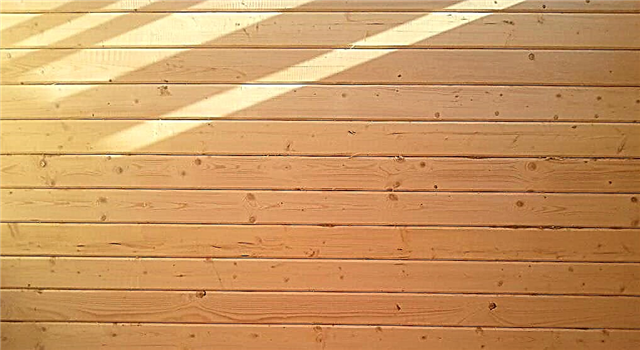
Plastic lining for the decoration of the kitchen
Plastic lining in the kitchen is in great demand among buyers. Plastic is waterproof, durable, easy to maintain and light in weight. Using modern technology, unique coatings are applied to the surface of plastic products. They allow you to simulate the pattern of valuable species of wood.

The wealth of colors used allows the use of various interior solutions. Ease of installation, ease of maintenance and low cost make plastic lining the most popular material for finishing kitchens.
For the decoration of the kitchen using the following types of products:
- Plastic lining,
- Plastic panels,
- PVC sheet.
Lining made of plastic has a width of 10 to 15 cm. The standard length is 1 to 3 m. The thickness of the lining varies from 3 to 10 mm. The surface is factory painted. Plastic panels have a width of 15 to 50 cm. The length of the panels varies from 1.5 to 3.0 m. The thickness of the panel is 5 to 15 mm. Plastic sheets are available with a width of 0.8 to 2.0 m. The length of the sheet varies from 1.5 to 4.0 meters. The thickness of the product is from 1 to 30 mm.
Plastic products are the best option for finishing kitchens in urban apartments. In large quantities, plastic is used to decorate the kitchen facilities of cafes, restaurants and bars.
PVC products have the following advantages:
- Ease of installation
- Variety of shapes and colors,
- Easy care
- A light weight,
- Low cost.
To install plastic products in the kitchen, use the following methods:
- Adhesive bonding,
- Screwing fasteners,
- Mounting on a wooden crate,
- Mounting on metal profiles.
Gluing plastic using adhesive mixtures is the easiest installation method. Plastic elements are glued to a clean, flat surface. For this, the walls are pre-leveled by applying a plaster layer. Before carrying the plaster, the walls and ceiling are treated with a primer.
For your information. To ensure a uniform and durable layer, gypsum-based plaster is used. Such material is characterized by ease of use, strength and quick setting.

Small pores and chips are hidden with a layer of putty. The leveled surface is sanded with sandpaper and coated with a primer. The primer improves the adhesive properties of the substrate.
Plastic lining in the kitchen is glued with glue on a silicone or acrylic base. For additional fastening use self-tapping screws with a press washer. To fix the upper and lower parts of the products, starting strips are installed.

Mounting on the crate avoids a large consumption of materials for leveling the walls. To fasten the frame to the wall, wooden vertical and horizontal bars are screwed. The slats are aligned with gaskets of various thicknesses. Alignment is made by level, plumb line and cord line. Plastic elements are screwed to the bars of the crate. Profile installation is carried out using metal or wooden rails. An angled aluminum profile is attached to the rails. Using steel brackets, panels are attached to the profile.
MDF wall paneling in the kitchen
MDF lining is produced by pressing and gluing wood shavings. The strength of the fiberboard is provided by a natural component called lignin. This adhesive is obtained from wood tar when exposed to high temperature and pressure.

On a note! Pressed plastic MDF panel is highly scratch resistant. Wood veneer lining perfectly imitates natural wood. Covering with photo printing is the most effective and demanded tool in the decoration of kitchen facilities.
The following types of wood fiber products are used for decoration of the kitchen:
Slatted MDF elements have a width of 150 to 900 mm. The length is from 2500 to 4000 mm. Thickness varies from 5 to 9 mm. Widely used for facing kitchen furniture. Tiled MDF products have a rectangular shape. The sizes of the sides vary from 250 to 1000 mm. Thickness varies from 10 to 18 mm. The main area of application is wall covering in kitchens. Sheet MDF materials have the largest dimensions. The width of the sheets is from 1000 to 3000 mm. Thickness varies from 18 to 40 mm. They are used for the manufacture of kitchen furniture. Sheets with a smaller thickness are used for finishing kitchens with a large area.

For finishing kitchens, MDF products with smooth and embossed surfaces are used. Smooth surface allows you to visually increase the size of the room. Elements with such a surface are convenient to clean from contamination.
Lining in the kitchen with embossed pattern give the interior a special originality. The wavy surface allows you to hide minor defects and damage.
For fixing MDF elements, two main methods are used:
The glue method is used for fastening thin products of small sizes. Installation of the kitchen lining is performed on a cleaned and primed surface.As the adhesive, use liquid nails or polyurethane foam. For lining kitchen walls with products with high weight, special acrylic-based glue is used.
In the frame method of facing MDF products are mounted on a crate of wooden battens or metal profiles. This method is used when laying a large number of communications and wires.
On a note! Beginning and professional designers of kitchen interiors will like MDF products of various colors and ways of fastening. Modern technology allows you to apply the most complex 3D-drawings and photographs to the surface.
MDF products are used for partial or full lining of the kitchen. In partial finishing, individual kitchen areas are repaired. The most popular is the decoration with MDF sheets of the lower part of the room. For wall cladding, MDF boards with a relief pattern are used. For the sheathing of ceilings, a thin MDF lining of light shades is used.

Full finish with MDF products is often used in country houses. On the plot provides minimal contrast between the internal and external design of the house.
Finally
The use of material such as lining in the interior of the kitchen is an effective investment. Simplicity of installation, easy care and durability of the material distinguish lining among similar materials. The ability to perform work without the involvement of specialists can significantly reduce the cost of repairing a kitchen with your own hands.
The use of lining in the interior of the kitchen
You can sheathe it all the walls of the room or select only the dining area. The latter option is the most common.

Painted lining in the kitchen in a cottage style

Design: interior design studio DREAM SPACE
Lining is also used in work areas, that is, on an “apron”. If the board is treated with an antiseptic and covered with moisture-resistant paint for the kitchen, caring for the surface of the apron is not a problem.
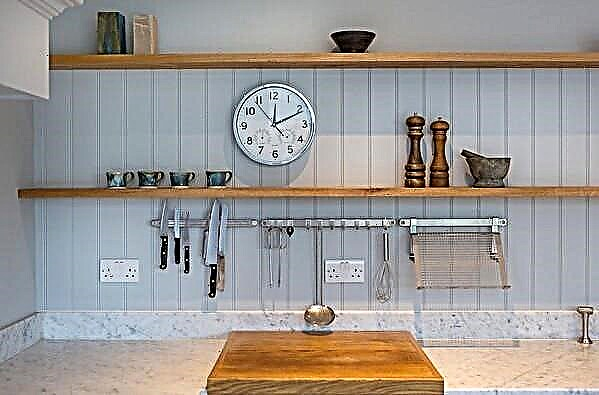

But for reliability, you can cover part of the wall over the stove with tiles or close the entire working wall with transparent tempered glass. This will protect the skin from negative influences.
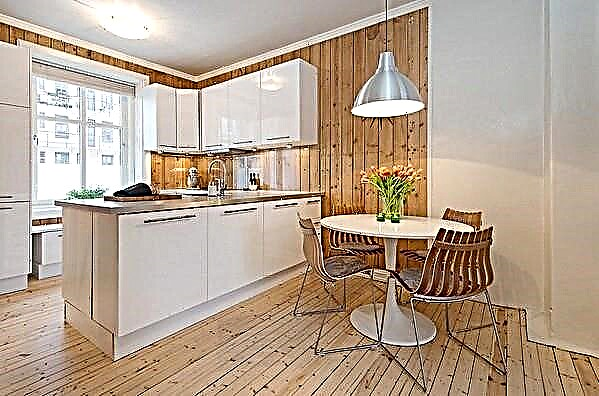
Work wall covered with clear glass
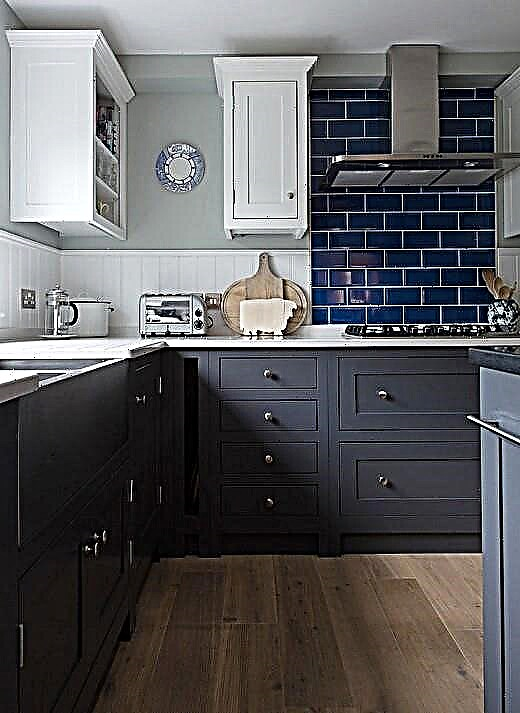

The lining located only on the bottom of the wall looks completely different. The surface above the casing is painted or glued with wallpaper. The border between them is formed by a wide bar (molding). It turns out a kind of imitation of classic wall panels a la Waynescot. This decoration option is appropriate in the interiors of such styles as American and French classics, Provence, English country.

Photo from deccoria.pl



Another way to use lining in the kitchen is to create the so-called backdrop for cabinets and cabinets. Only the part of the room where the kitchen set is installed is sheathed with a board.

Country style kitchen. Design: A-Design Company

Provence style kitchen. Design: Evgenia Shimkevich
Many people have a question: How to place the lining on the wall - horizontally or vertically? Usually it is positioned vertically. But if there is a need to visually expand the kitchen, you can make horizontal lining. This is permissible. There are no canons in this regard.

Design: Atelier Interior
By the way, if you like the look of the sheathed wall, but there is no desire and the ability to mount the lining - it is worth looking for a wallpaper with its imitation. Modern wallpapers imitate almost any decoration, and wall paneling is no exception. True, the wallpaper imitating it is almost always white, without the texture and pattern of the tree. But they can be painted in any color you like.
Features
The lining is thin boards, coupled by the sides on the principle of "thorn-groove", which are screwed to the base with screws. The question arises: why did the building material get such a name, what do cars have to do with it. Initially, railway cars were lined with wooden battens from the inside, which protected the transported goods from exposure to the sun and rain. At first, wooden panels were fastened in the usual way, which was later replaced with a tenon-groove system - for easier installation and to prevent defects. Soon, this know-how was appreciated and began to be applied in the finishing work of the premises.
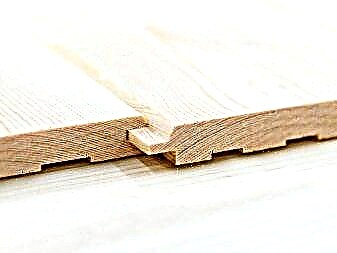
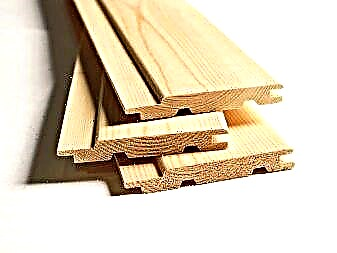
Lining is a generic name for rack materials, and not only wooden, but plastic (PVC) and made of MDF fiberboard.
It is used for ceilings and walls, both outdoors and indoors. Initially, the lining was found in rooms such as balconies or verandas, however, fashion trends moved it inside the living space. Increasingly, lining is also chosen for finishing kitchens.
There are several reasons for this trend:
- some interior solutions require finishing with a board (for example, country style),
- the range of material has expanded, decorative surfaces and various formats of lining have appeared,
- A wide selection of high-quality paints allows you to give the material the necessary shade to optimally fit it into the interior.


For the decoration of the kitchen most often choose panels with a width of about 12 cm, a thickness of 7-14 mm. The length of the rails reaches 3 meters, during installation, you can cut the material into the necessary segments.

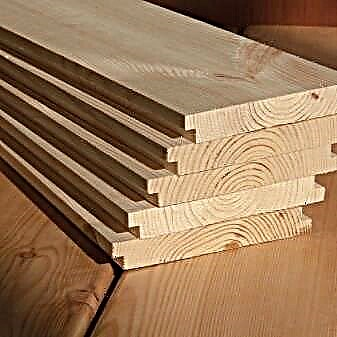
Pros and Cons of Finishing
The main advantages of lining are:
- environmental friendliness
- hygiene
- sufficient moisture resistance
- ease of cleaning
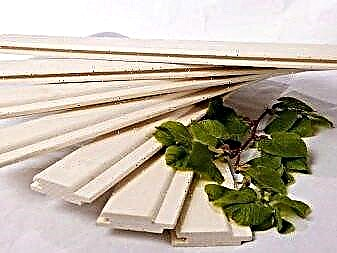
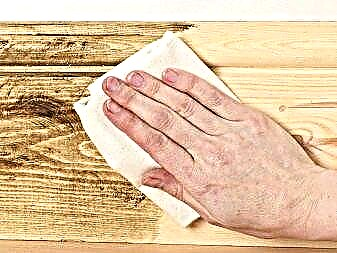
- ease of installation
- sound and heat insulation,
- resistance to external aggressive environmental influences,
- durability with proper care
- the ability to create a smooth surface,

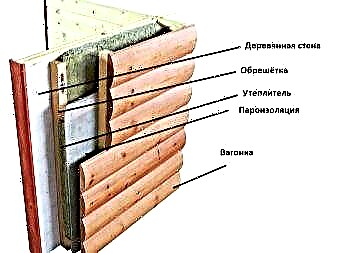
- the ability to hide wires and communication systems under the cover,
- esthetic and respectable appearance,
- if the lining is made of natural wood, then its aroma gives a unique atmosphere to the room.

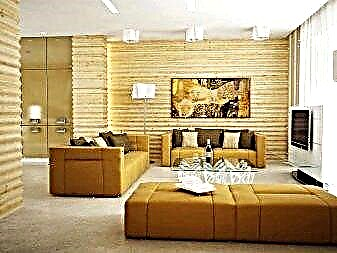
Compared to the listed advantages, there are not many disadvantages:
- the need for thorough surface care,
- a lining made of natural wood is subject to decay and deformation, therefore, boards require processing with special antifungal and refractory compounds,
- lining made of MDF and PVC does not have high environmental characteristics,
- wood material of the highest category has a high cost,
- since the installation is done on a special frame, it can “steal” the space.

Wooden
The most popular finish is wooden lining. It gives the room a characteristic, cozy aroma of wood, creates a comfortable microclimate in the room - the walls "breathe", absorbing excess moisture or giving it away if necessary. Cons of the material - susceptible to decay, infection by fungus, deformation.

Wooden lining is made of various tree species:
- conifers - the wood is saturated with essential oils and resins, which naturally prevents the appearance of fungus and excess moisture (spruce, pine, larch, cedar), are characterized by increased strength and durability, are more common on the exterior,
- hardwood - less durable, but does not contain resin, therefore it is widely distributed in the interior decoration (linden, alder, oak),
- valuable - products from them are durable, but the cost is high, it is used for interior decoration (mahogany).

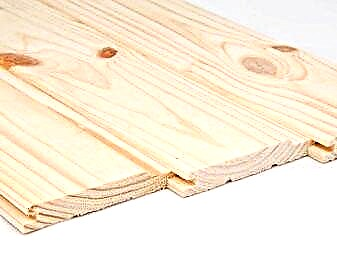
This type of lining is of 4 classes:
- extra - the highest, perfect surface,
- class A - a small number of defects (knots, cracks) are allowed,
- class B - places affected by insects, resin pockets, cracks, knots, are allowed,
- Class C - the lowest quality products.


In addition, wooden products are divided by type of profile:
- lining made in accordance with GOST,
- Eurolining - a profile made according to the European standard DIN 68126/86.


Among the euro lining there are also several options:
- traditional
- Softline (softline) has a rounded chamfer,

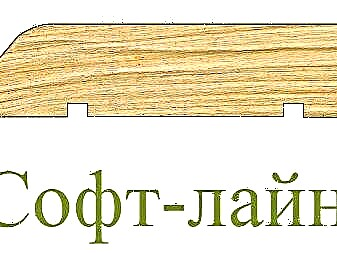
- calm - the absence of a chamfer near the spike creates an imitation of the surface of the timber without obvious seams,
- a landhouse is the most expensive type of lamellas, since the surface of the tree is subjected to various processing methods, resulting in complex patterns on wood,

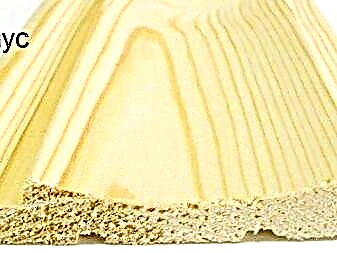
- block house - due to its roundness it creates an imitation of the surface collected from processed logs,
- “American” - is most often used for facade work, there is no chamfer in the profile and a smooth transition is made from the spike to the middle.
- bilateral lining does not have a back side, it is used to create internal partitions in rooms where there is no high humidity.
PVC (polyvinyl chloride)
Plastic panels have almost all the advantages of wood paneling, except for creating a microclimate. A wide color palette, unlimited possibilities of imitation of any materials, ease of care, easy installation and affordable price make this material popular.


Wooden cladding organically looks in the country kitchen or in a private house. It is left unpainted or painted in gentle colors. The kitchen, lined with white Scandinavian-style lining, is found not only in cottages, but also in city apartments. This material can be trimmed the entire area, apron, dining area.


Design ideas
The advisability of using lining in the interior may cause bewilderment of buyers, since the first association is a sauna or works of decoration of the Soviet era. However, the designers are convinced that by creating the right combination of battens with painted walls, plaster, wallpaper or ceramics, an interesting and harmonious surroundings can be created during the repair process.
The living room, decorated with wooden lining, is filled with a special atmosphere and indescribable comfort. Walls can be sheathed both vertically and horizontally - depending on the purpose (raise the ceiling or push the walls apart).


Reiki made of natural wood can completely sheathe the kitchen or dining room - From floor to ceiling - adding a lush accent. It can be a bright countertop, a kitchen set, one of the walls painted in an intense and pleasant color (brown, beige, orange, lime).


Lining can sheathe the working area - an apron. The area above the stove is still recommended to be tiled or to cover the entire skin with a special protective glass.
If you are not a fan of this, a big plus will be the ability to tint panels, not only wood, but also plastic. You can paint the panels with your own hands, since the choice of tools for this is huge.
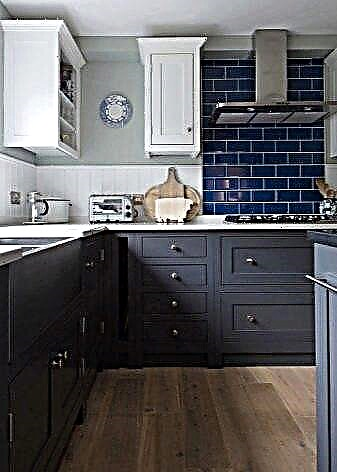

Scandinavian style involves the use of white lining, which sheathed walls and ceilings.
A Provence style kitchen has many advantages: it is appropriate both in a small apartment and in a huge country mansion, it will be affordable with a small budget and will never go out of style, since the basis of style is classicism, only softer and more comfortable. Typical colors for wall decoration - lavender, olive, pistachio, ocher, so the lining in the kitchen can be painted in any of these colors, and furniture, walls and ceiling - in white.
Country style is simply created for country houses, and lining fits perfectly into the interior.
For lovers of the natural and the natural - eco-design. There are no strict canons of room decoration, it is important to bring a spirit of relaxation and the presence of natural elements into the space of the apartment. Lining from wood harmoniously fits into a similar interior.
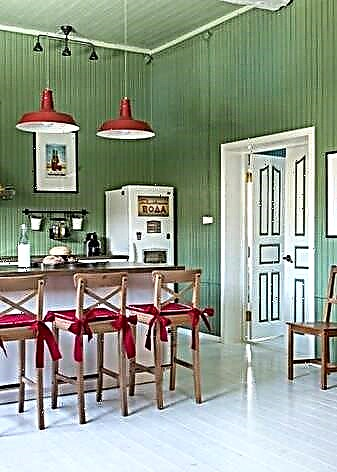
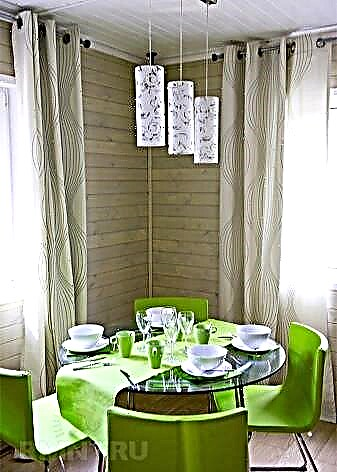
Mediterranean, marine styles with an abundance of light shades and blue-blue colors, rattan or simply light furniture are perfectly combined with the lining.
The modern classic interior also welcomes the presence of cladding boards.
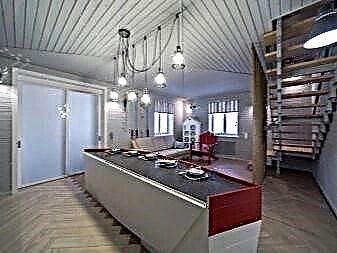
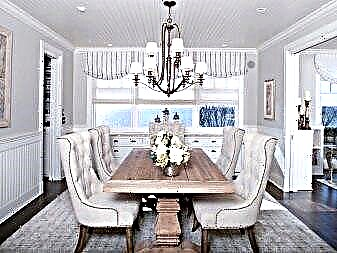
An option looks interesting when the color of the kitchen set is identical to the wall and ceiling sheathing.
Eclecticism means a combination of several styles. For an eclectic kitchen, designers are advised to decorate one or two walls with a clapboard, choosing the horizontal arrangement of battens.
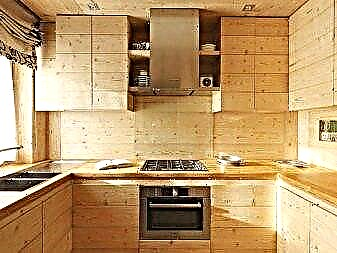
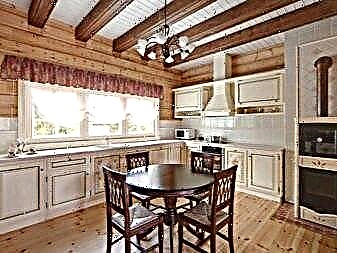
The cladding board looks great as an element of the ceiling decoration in the cottage. Experts recommend using the following technique: wallpaper the walls, and on the ceiling make an insert from the lining of the same or contrasting color.
Options for lining combinations in the kitchen may also be as follows:
- ceiling covered with cladding and walls in plaster,
- ceiling of slats + similar apron + wall covering under the wallpaper (or plaster),
- plastered ceiling + walls lined with clapboard.


Another interesting idea: to decorate the ceiling with a bright lining, and the walls with more pastel colors. Tiffany color is popular in modern interiors.
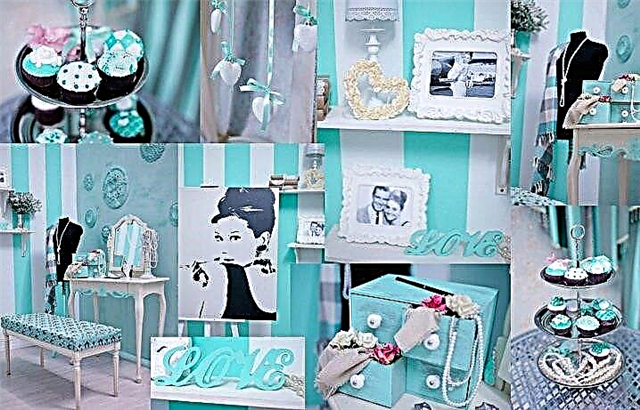
Care Tips
Despite the practicality and relative durability of the material, the lining needs special care.
- Despite the special impregnations, the wooden lining cannot be abundantly moistened with water to avoid deformation and swelling of the board.
- Do not use aggressive cleaners or detergents. If a serious stain appears, you can gently pass it with a soft cloth with a mild solvent. For varnished surfaces, it is worth using a cotton swab or cotton swab, you need to handle the stain very carefully so that the solvent does not remove the varnish along with the dirt.


- Any lining is lightly wiped with a soft damp cloth.
- Once a year it is recommended to treat the surface with protective agents (waxes, varnishes). Before this, the boards must be cleaned and dried thoroughly, and the dust should be washed off with a soft cloth or brush.
- The lining trim should be positioned so that fresh air enters them - if possible.
- In the area of the apron, it is better to place the boards vertically so that moisture does not accumulate.

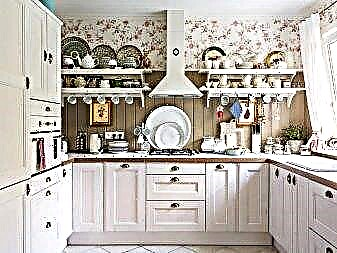
Beautiful examples of upholstery in the interior
Beautiful cuisine is the dream of any housewife. The abundance of design ideas and the Internet will help you choose the perfect combination of all the details, the main thing is not to lose your head in a wide variety of options.
A kitchen with a home stove will appeal not only to Emele. Such options are most common in private homes or cottages, however, in the city apartment, you can add this “unit” to the kitchen design. Creating a rustic style involves the use of only environmentally friendly materials, such as wooden lining. The kitchen, filled with the aroma of wood and crackling wood, will give an indescribable feeling of comfort and relaxation.


Country style is the common name for all rustic styles (French Provence, Mediterranean, English Shabby Chic, American and so on). A characteristic feature is light aging, natural materials, pastel colors without bright contrasts, deliberate roughness of textures. Clapboard lining the ceiling, walls, countertops, elements of the working area.
The Scandinavian-style kitchen is bright, spacious, comfortable. The main rule of decoration is minimalism, therefore white color and simple materials such as lining are so popular.
Wall paneling calm looks appropriate not only on the ceiling.

Finally, a few stylish interior solutions that are relevant not only in the kitchen.
Reasonably combining the cladding board in the kitchen with other elements of the interior, you will create an atmosphere of coziness and comfort, which will bring households even closer.
See how to install lining in the next video.
Scope of application
Thanks to the right material for finishing, the design in the apartment or in the country kitchen can be absolutely anything. The lining is easily mounted on the walls and ceiling, in perfect harmony with other finishing materials. A kitchen decorated with such a product will always look original and unusual.
To give the kitchen a certain “zest”, you can trim, for example, with a plastic lining, only an apron. Firstly, it is practical, and secondly, it’s beautiful, because you can choose any shade that will combine or contrast with the main colors of the kitchen.
White lining will fit absolutely any color and texture, therefore it is often used in kitchen interiors, for example, when they want to focus on dark appliances or zoning space. When the living room is combined with the kitchen, you can use this type of decoration material only on the walls of the kitchen, or make a smooth color transition from the walls of the kitchen to the walls of the living room.

The same applies if it is necessary to focus on the dining room., which is one single space with a kitchen. We cited interesting ideas, solutions, and color combinations as an example in our material, and you can learn more about them at the end of this article.
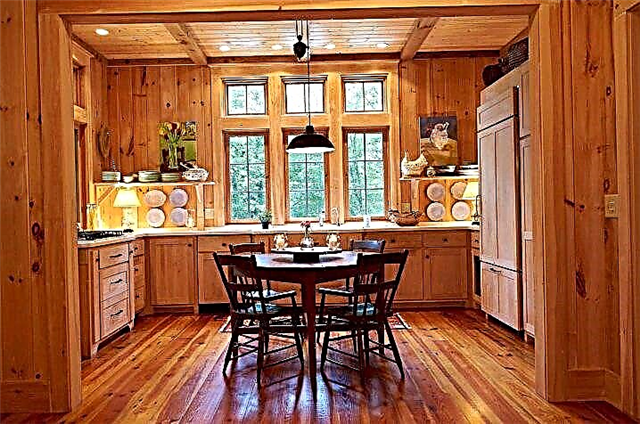
How to sheathe?
Doing wall clapboard in a private house or apartment with your own hands does not require special professional skills. Such repairs can be easily done on their own, especially if you know the rules for cladding with this type of finishing material.

Ease and simplicity of installation is an advantage not only of plastic, but also of wood products. The most important thing is to start by aligning the walls or ceiling, where the finishing material will be mounted. The surface should be perfectly flat, after which you can proceed with the installation of the crate.

Wooden or MDF lining can be fixed in two ways. For example, this can be done using special nails with a very small hat. In this case, the board will have to be punched through, and the nail itself should be drowned so that it is not visible on the surface.

Also, such panels are attached using conventional screws. To do this, in the board itself, you must first prepare holes of such a diameter that would correspond to the diameter of the cap of the screw itself. The hat also needs to be drowned, and the hole can then be closed with a dowel.

In addition, installation can be carried out using special brackets called clamps. They are easily attached to the lining itself, after which they need to be attached to the crate. This can be done with self-tapping screws or nails. The installation process is carried out from one corner to another. For the decoration of corners, we recommend the use of special decorative corners, which are easily attached with liquid nails.

As soon as the wooden lining is completely mounted on the selected surface, it will be necessary to sand it a little with fine-grained paper, and then walk with a damp cloth. The final stage will be varnishing or painting the surface with any chosen means.


Plastic products are also attached to a pre-made crate. For work, you can use kleimers or mounting profiles, which have several advantages. They withstand damp well, are not moldy and are easily dismantled if necessary.
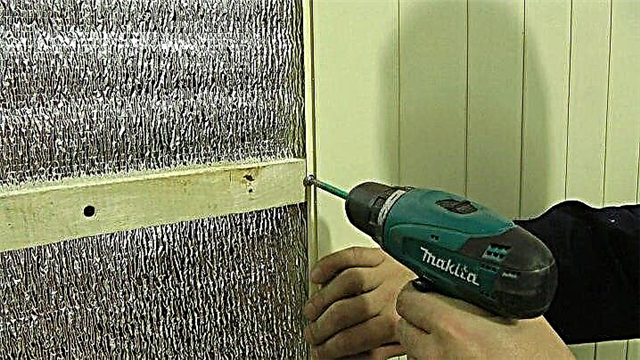
Tips & Tricks
Cladding any home wall or ceiling requires accuracy.
Keep in mind a few useful tips that are sure to come in handy during self-repair:
- In the event that the cladding is carried out using wooden products, then it must be started only after all other construction works are completed. This is especially true of those works that are associated with water, screeds and plaster.
- Any lining must be acclimatized in the room in which it will be installed. The product must be laid out on a flat floor and left there for at least a day.
- Remember that in order to visually raise the ceiling, the panels must be laid vertically. Horizontal laying will visually expand any space.
- If the kitchen of a country house with a real stove, then you can easily give preference to wooden products.
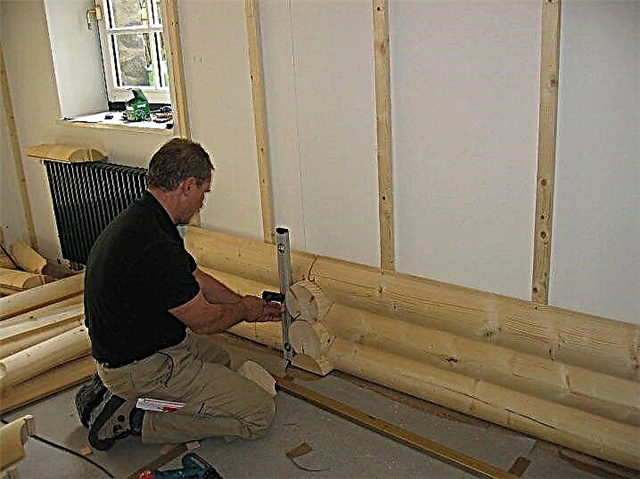
Beautiful examples in the interior
In order for the kitchen to be not only practical, but also stylish, we recommend that you take into account some of the nuances during interior decoration. For example, in the case when the room is completely sheathed with lining, that is, both the walls and the ceiling, you need to make a bright emphasis on furniture, choose a bright sideboard, curtains, etc.
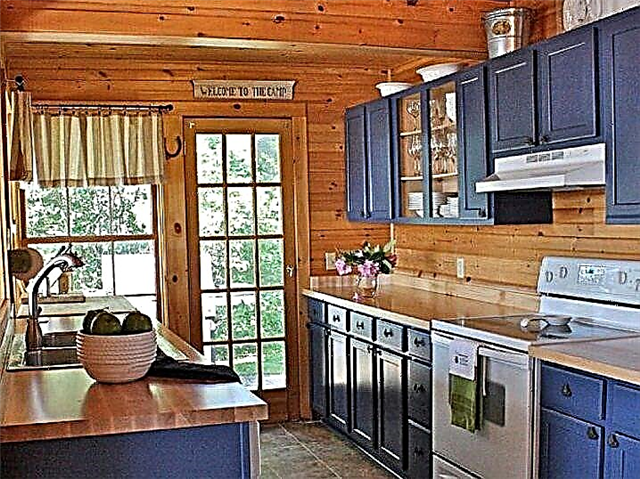
When the kitchen wall is sheathed with one of the modern types of lining, special attention should be paid to the kitchen set, namely its facade. It is best to choose smooth and glossy surfaces that could contrast with wood paneling. And if the panels are made of plastic, then you can choose a facade with imitation wood. At the same time, try to choose all the equipment and other accessories in the same style and discreet color.
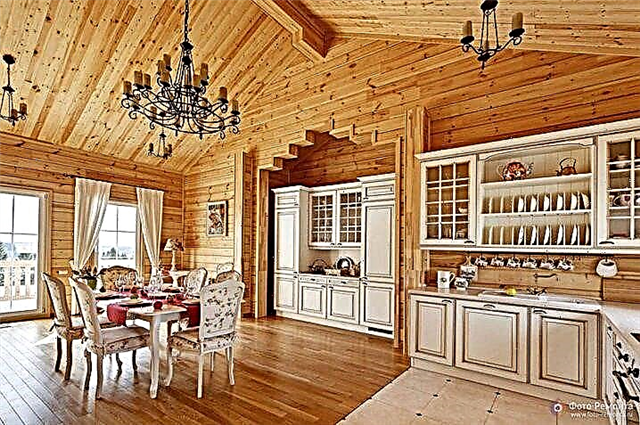
If all the walls are sheathed with lining of the same shade, then it is necessary to focus on the dining area. For example, if the walls are white, blue or pale green, then the dining table and chairs should be brighter. By the way, the dishes you can choose the same shade as the walls. All this will look very harmonious, and bright accents will bring a certain "highlight".

If you want to realize something modern and unusual for your kitchen, then decorate with a lining only two or one wall. In this case, select the horizontal direction. We recommend that you select kitchen furniture in an eclectic style that will go well with such a wooden wall from the lining.

The wooden surface of the lining can be completely painted in any color, for example, pistachio or soft vanilla. In this style, you can perform only one wall, which will be decorative. On this wall you can place small shelves with spices and other useful little things for cooking. In the same color, you can choose furniture, cabinets for the kitchen, which will be in harmony with the lining and complement the overall style. On the same principle do projects in the style of French country - Provence.
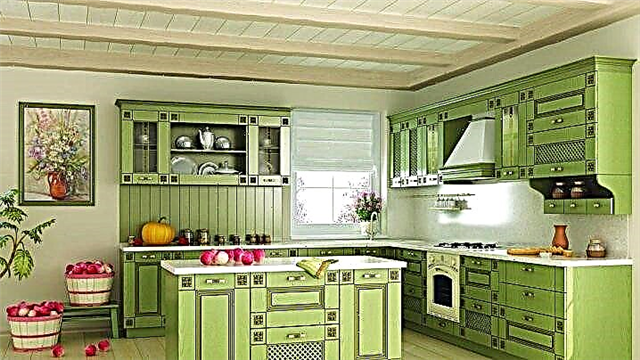
Lining looks great if the room is made in newfangled eco-style. Then it is best to give preference to wood panels and complement the kitchen with accessories in the form of wicker baskets, vases and natural textiles.

In the event that the lining of the lining is only in the form of an “apron” on the wall, then it is worthwhile to perform any other details in the same color and style. For example, it can be small accessories or kitchen furniture.

It looks very stylish in the kitchen, especially in the dining area of the lining, which is mounted only on the bottom of the wall. And on top of the wall are covered with decorative paint or even special wallpaper. The border between the two finishing materials can be divided by a special molding, which will give the overall interior a special style.

Looks great option, when the walls are sheathed with a classic wooden lining, and the ceiling and kitchen cabinets are made of materials with a glossy surface. Such a contrast looks interesting in the interior of a modern kitchen.
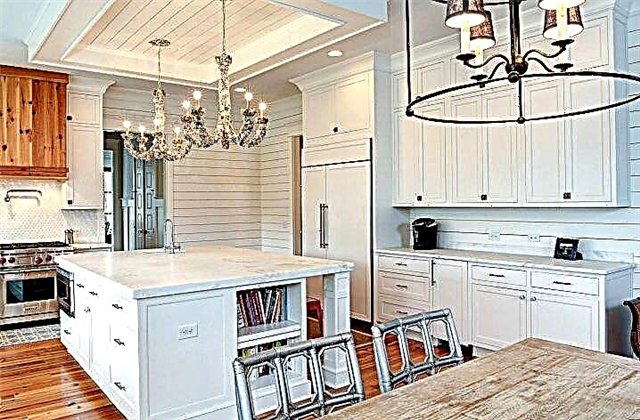
See below for more details on decorating the ceiling with PVC panels in the kitchen.

